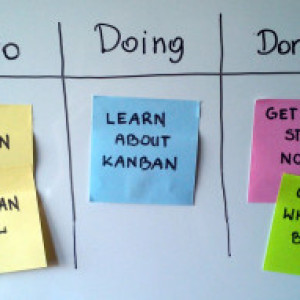Testing Process Is A Critical Part Of The Software Development Life Cycle (SDLC)
The testing process is an essential part of the software development lifecycle, as it helps ensure that a product is of high quality and fit for its intended purpose. Testing can take many forms, from manual testing by a human tester to automated testing using specialized tools. In this blog, we will explore the testing process in detail, including its various phases, types of testing, and best practices for conducting effective testing.
- Planning and preparation
The testing process begins with planning and preparation, which involves determining the scope of the testing, selecting the appropriate testing techniques and tools, and setting up the testing environment. This phase also involves identifying the resources needed for testing, such as testers, hardware and software, and creating a testing schedule.
- Designing test cases
Once the planning and preparation phase is complete, the next step is to design test cases. Test cases are sets of conditions or variables under which a system or component is tested to determine whether it behaves as expected. Test cases are usually written in a standardized format and include a description of the test, the steps to be followed, the expected result, and any other relevant information.
- Executing test cases
Once the test cases have been designed, they are executed to determine whether the system or component under test behaves as expected. This phase involves running the test cases and comparing the actual results with the expected results. Any deviations from the expected results are recorded as defects or issues.
- Evaluating results
After the test cases have been executed, the results are evaluated to determine whether the system or component under test meets the specified acceptance criteria. This phase involves analyzing the test results, reviewing the defects and issues that were identified, and determining whether the system or component is ready for release.
- Reporting
The final phase of the testing process is reporting, which involves documenting the test results and providing feedback to the relevant stakeholders. This phase may include creating a report that summarizes the testing activities and results, as well as presenting the findings to the development team and other stakeholders.
Types of testing
There are many different types of testing that can be conducted during the testing process, depending on the goals of the testing and the characteristics of the system or component being tested. Some common types of testing include:
-
Unit testing: This type of testing focuses on individual units or components of a system, such as functions or classes. Unit tests are usually automated and are designed to validate the behavior of a single unit in isolation.
-
Integration testing: This type of testing focuses on the integration of different units or components of a system. Integration tests are designed to validate the interaction between different units and ensure that they work together as intended.
-
System testing: This type of testing focuses on the behavior of the complete system, including all components and interfaces. System tests are designed to validate the end-to-end functionality of the system and ensure that it meets the specified requirements.
-
Acceptance testing: This type of testing is conducted to determine whether a system is ready for release. Acceptance tests are typically carried out by the customer or end user and are designed to validate that the system meets their needs and expectations.
-
Regression testing: This type of testing is conducted to ensure that changes to a system have not introduced new defects or issues. Regression tests are typically run after changes have been made to a system to ensure that it continues to function as intended.
Best practices for testing
To ensure that the testing process is effective and efficient, there are several best practices that should be followed:
-
Define clear and measurable acceptance criteria: Before testing begins, it is important to define clear and measurable acceptance criteria that will be used to determine whether the system or component under test is ready for release. These criteria should be based on the requirements of the system and should be agreed upon by all relevant stakeholders.
-
Develop a comprehensive test plan: A test plan is a document that outlines the testing strategy, scope, and resources for a testing project. It should include a list of the test cases to be executed, the testing environment, and the roles and responsibilities of the testers. Developing a comprehensive test plan helps ensure that all relevant aspects of the system are tested and that the testing process is well-organized and efficient.
-
Use automated testing tools: Automated testing tools can greatly speed up the testing process and help ensure consistent and accurate results. These tools can be used to automate the execution of test cases, compare actual and expected results, and report on the results of the testing.
-
Follow a test-driven development approach: Test-driven development (TDD) is a software development methodology in which the tests are written before the code. This approach helps ensure that the code is developed in a way that meets the specified requirements and is easy to test.
-
Use agile testing techniques: Agile testing is a testing approach that is aligned with the principles of agile software development. It involves close collaboration between testers and developers, frequent testing and feedback, and a focus on delivering small, incremental releases of the software.
-
Use continuous integration and delivery: Continuous integration (CI) is a software development practice in which code changes are frequently integrated and tested. Continuous delivery (CD) is a practice in which code changes are automatically built, tested, and deployed to production. These practices help ensure that the software is always in a deployable state and can be released quickly and efficiently.




